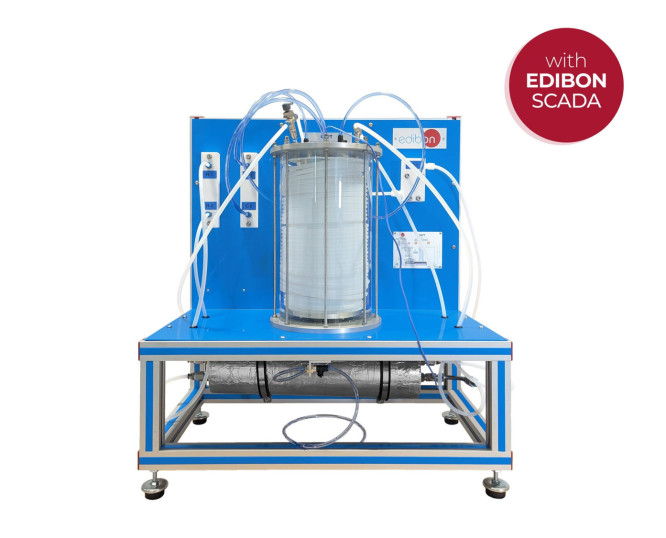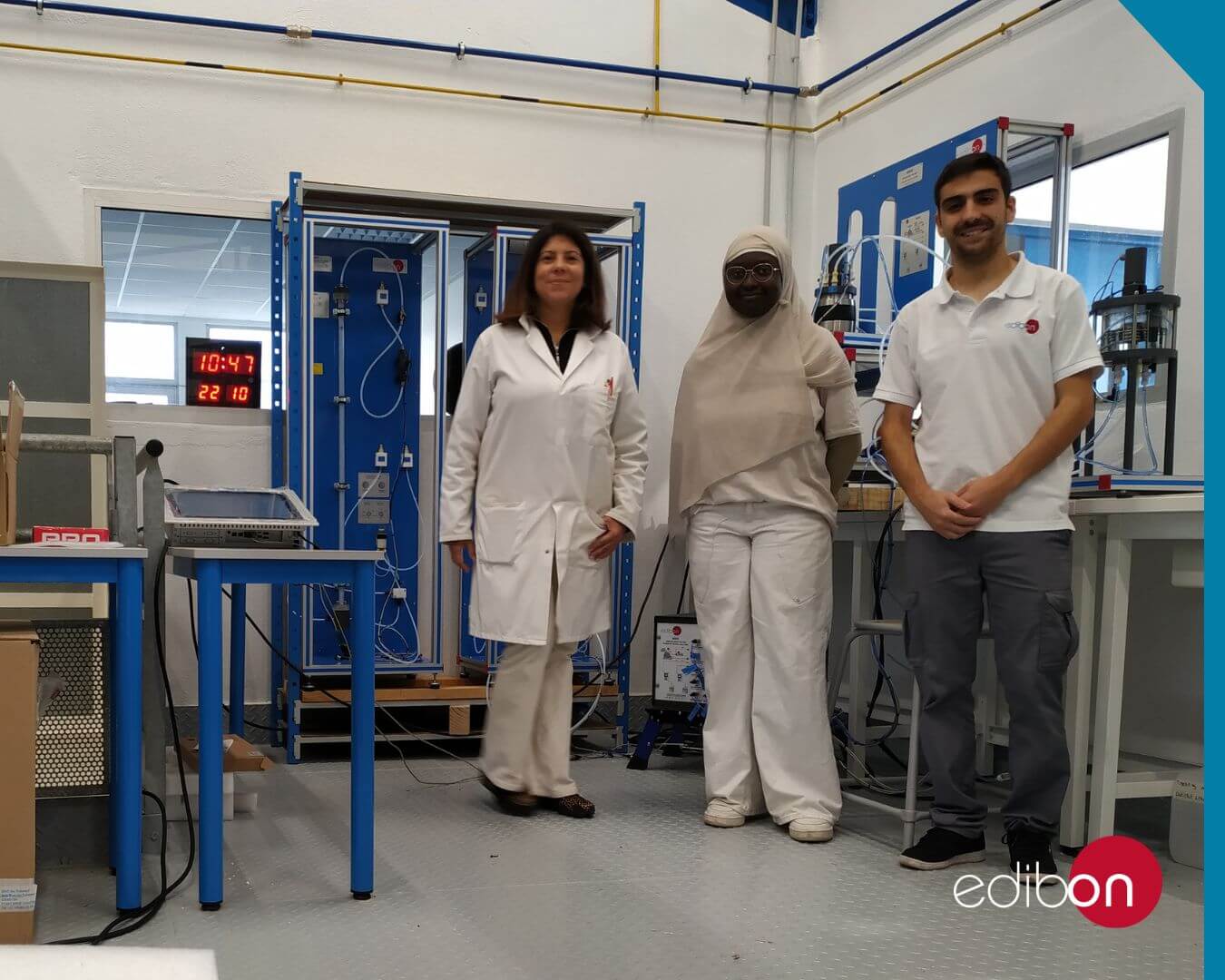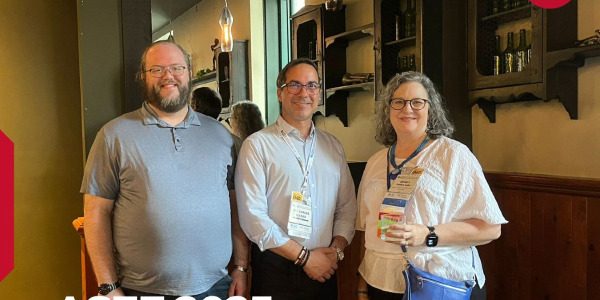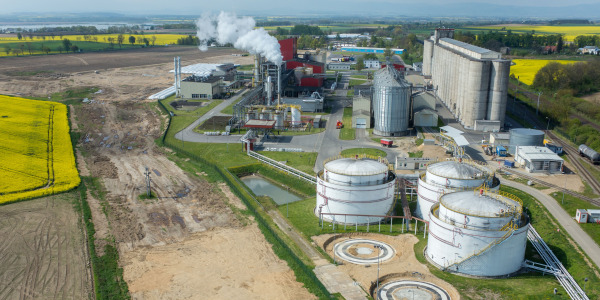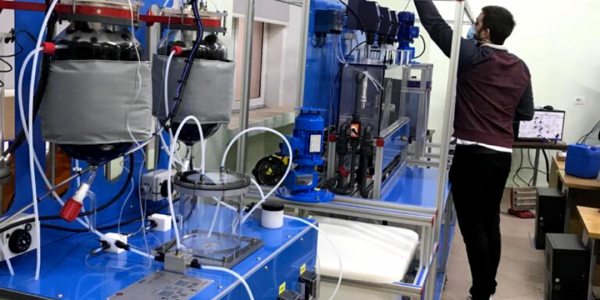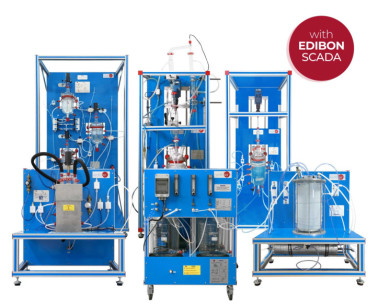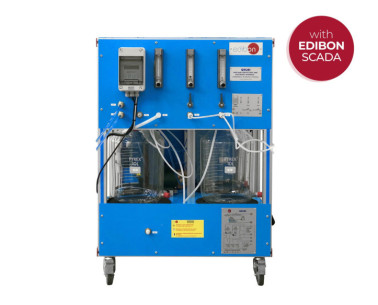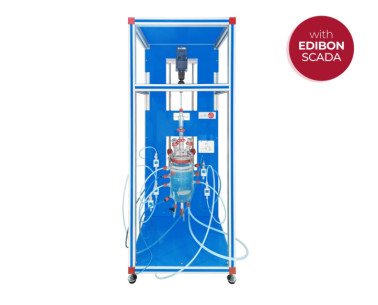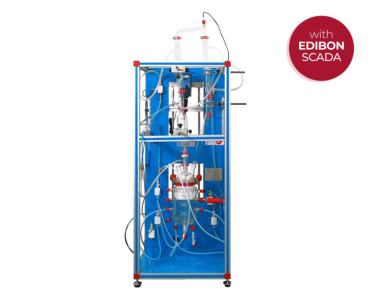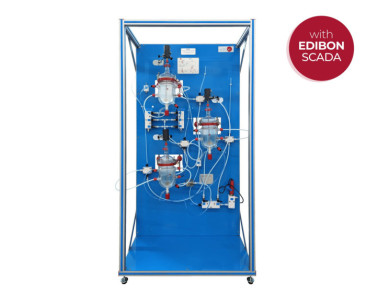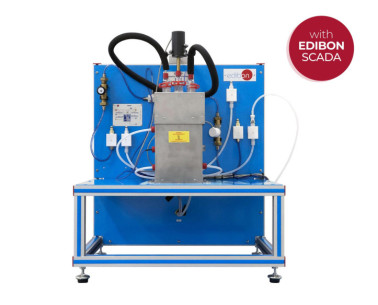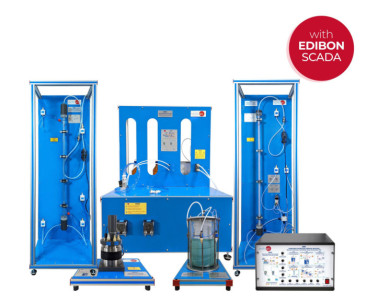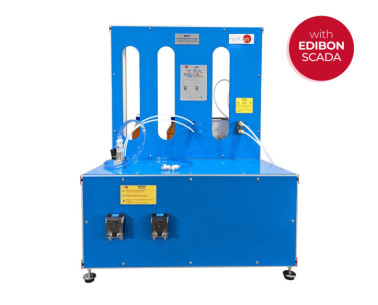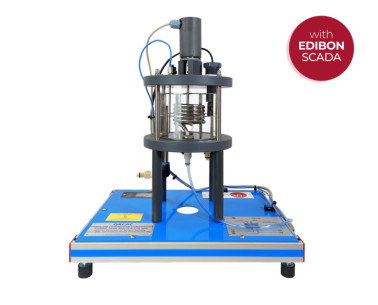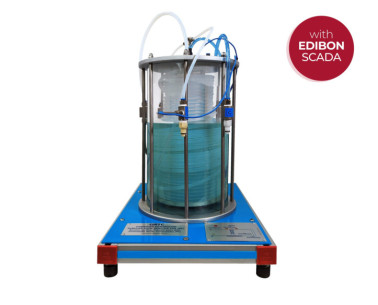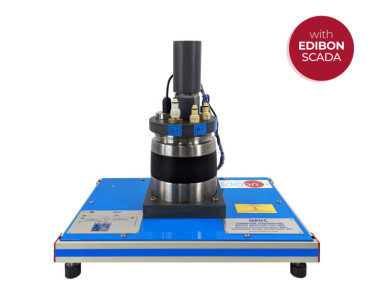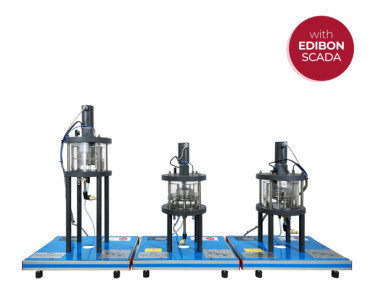QRFT Réacteur à Flux Tubulaire
SYSTEMES INNOVANTS
The Tubular Flow Reactor, "QRFT", specifically designed by EDIBON, is intended for the kinetic study of liquid-liquid homogeneous reactions. This unit allows for a wide range of practices, including the determination of kinetic equations, the calculation of kinetic constants and their variation with temperature, as well as the comparison of theoretical and experimental conversion values of the reactor.
Expansions
Laboratories
NOUVELLES LIÉES
Description Générale
The Tubular Flow Reactor, "QRFT," specifically designed by EDIBON, is intended for the kinetic study of liquid-liquid homogeneous reactions. This unit allows for a wide range of practices, including the determination of kinetic equations, the calculation of kinetic constants and their variation with temperature, as well as the comparison of theoretical and experimental conversion values of the reactor.
Additionally, it facilitates the study of residence time effects and mixing effects in chemical reactions, providing precise and detailed data that significantly contribute to the advancement of knowledge in the field of chemistry and process engineering.
Tubular flow reactors are essential elements in the field of chemical and process research. These laboratory units are used to study and understand chemical reactions, as well as to develop velocity equations that describe their operation and evolution. Their versatility and precision make them indispensable tools in various industrial fields.
To work with this reactor, the Base and Service Unit, "QRUBI," is required, which supplies the necessary reagents and thermostatic water for proper operation.
These Computer Controlled Units are supplied with EDIBON Computer Control System (SCADA), and includes: The unit itself + a Control Interface Box + a Data Acquisition Board + Computer Control, Data Acquisition and Data Management Software Packages, for controlling the process and all parameters involved in the process.
Des exercices et pratiques guidées
EXERCICES GUIDÉS INCLUS DANS LE MANUEL
- Détermination des conductivités ioniques.
- Conversion théorique du réacteur tubulaire.
- Détermination expérimentale de la conversion du réacteur tubulaire.
- Dépendance du temps de séjour.
- Détermination de l'ordre de réaction.
- Dépendance de la constante de vitesse et de la conversion avec la température.
- Possibilités pratiques supplémentaires : Étalonnage des capteurs.
PLUS D'EXERCICES PRATIQUES À EFFECTUER AVEC CETTE ÉQUIPEMENT
- De nombreux étudiants voient les résultats simultanément. Pour voir tous les résultats en temps réel dans la classe au moyen d'un projecteur ou d'un tableau blanc électronique.
- Contrôle ouvert, multicontrôle et contrôle en temps réel. Cette unité permet intrinsèquement et/ou extrinsèquement de changer la durée, les gains, paramètres proportionnels, intégraux, dérivés, etc. en temps réel.
- Le système de contrôle informatique avec SCADA et Contrôle PID permet une véritable simulation industrielle.
- Cette unité est totalement sûre car elle utilise des dispositifs de sécurité mécaniques, électriques et électroniques.
- Cette unité peut être utilisée pour faire de la recherche appliquée.
- Cette unité peut être utilisée pour donner des cours de formation aux industries même à d'autres institutions d'enseignement technique.
- Contrôle du processus de l'unité QRQC via la boîte d'interface de contrôle sans l'ordinateur.
- Visualisation de toutes les valeurs de capteurs utilisées dans le processus de l'unité QRQC.
- En utilisant PLC-PI, 19 autres exercices peuvent être effectués.
- Plusieurs autres exercices peuvent être faits et conçus par l'utilisateur.
EQUIPEMENT COMPLEMENTAIRE
Unité de Base et de Service pour QRQC
Réacteur Isotherme avec Agitateur
Réacteur Isotherme avec Distillation
Réacteurs avec Agitateur, en Série
Réacteur Adiabatique et Isotherme
Réacteurs Chimiques, Contrôlés par Ordinateur (PC)
Unité de Base et de Service pour QRC
Réacteur Comtinu à Réservoir Agité pour QRC, Contrôlé par Ordinateur (PC)
Réacteur à Écoulement Tubulaire Contrôlé par Ordinateur pour QRC
Réacteur Discontinu pour QRC, Contrôlé par Ordinateur (PC)
Réacteurs à Cuve Agitée de Série pour QRC, Contrôlés par Ordinateur (PC)
Qualité

Service après vente

 Préférences sur les cookies
Préférences sur les cookies

